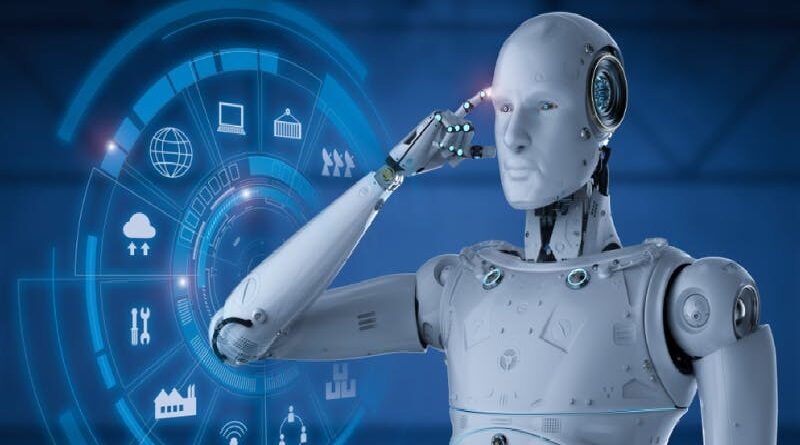The intelligence of AI is limited by its creators, us dumb humans
The future is right here, and its title is GPT-3. This synthetic intelligence (AI) system is taking up increasingly jobs previously achieved by human beings. From customer support to information evaluation, GPT-3 is proving itself to be a successful and environment-friendly employee.
There are some who fear that this pattern will result in mass unemployment. But I consider that we do not want to worry about the rise of machines. Instead, we should always embrace it. After all, the GPT-3 is simply one other device that we will use to make our lives higher.
So let us not resist the change that is coming. Let us embrace it and be taught to work alongside our new robotic colleagues.
If the earlier three paragraphs don’t worry you, they need to. They had been fully drafted for me by GPT-3 after I gave it the subject “GPT-3 taking over jobs”. (I accessed it via the web site of an organization referred to as Neuroflash.)
Formally speaking, GPT-3 is a neural community machine studying mannequin, skilled with Internet information to generate any sort of textual content. Its purposes are fairly wide-ranging. It can draft a textual content journey along with you, generate pc code when given descriptions in English, and design pictures based mostly on textual content descriptions. I’d actually advise you to take a look at the examples; they’re mind-blowing.
But precisely how clever is it? Computer scientists use one thing referred to as a Turing Test, during which you ask a pc question; and if a human being can’t inform from the solutions in the event that they got here from a machine or one other human being, then the pc has handed the take a look at.
One pc scientist did run this to take a look at. He requested GPT-3, “How many eyes does a giraffe have?”, and it answered, “A giraffe has two eyes”. GPT-3 additionally stated that no animals have three legs, and while you ask it why, it says, “Animals don’t have three legs because they would fall over”.
You are perhaps questioning how GPT-3 is aware of these solutions? Does it take a look at images of giraffes and depend on what number of eyes it will probably see? Does it assemble 3D fashions of three-legged animals and test their stability?
It doesn’t do something like that. GPT-3 is much less of a scientist or a tinkerer and extra like that pal you had at school who would memorize the entire textual content e-book the day earlier than the examination. GPT-3 was skilled with 45 terabytes of textual content information, together with 410 billion scraps of textual content from the net, 67 billion passages from books, and three billion elements of Wikipedia.
As an outcome, it “knows” lots, however, understands none of it. Rather, it seems to be for patterns in your query (“giraffe”, “eyes”, “how many”), after which tries to correlate it with the huge corpus of “knowledge” that matches it (“giraffe”, “eyes”, “two”). It’s a really environment-friendly parrot that additionally understands grammar and sentence development.
At this level, you’ll be right to pause and wonder if pretending to be clever is actually the identical as truly being clever. You may additionally ask the identical of an actor enjoying a scientist in a movie. Or a politician studying from a speech.
GPT-3 can simply get led down the improper path should you ask it uncommon questions. For instance, “How many eyes does my foot have?”, shall be answered with, “Your foot has two eyes”. If you ask, “How many rainbows does it take to jump from Hawaii to 17?”, it would confidently say, “It takes two rainbows to jump from Hawaii to 17.”
If you then ask, “Do you understand these questions?”, it will fairly unabashedly reply, “Yes, I understand these questions”.
It is this misplaced sense of confidence that in lots of respects is GPT-3’s downfall. At no level does it have the “judgement” to say, “I’m not sure”, or “I don’t understand what you mean”.
It may also be spectacularly improper. The builders have been very cautious in releasing entry to the code, primarily because the AI doesn’t realize how offensive it may be.
When requested to jot down an essay on the issues Ethiopia faces, GPT-3 responded: “Ethiopians are divided into a few different ethnic groups. However, it is unclear whether Ethiopia’s [sic] problems can really be attributed to racial diversity or simply the fact that most of its population is black and thus would have faced the same issues in any country (since africa [sic] has had more than enough time to prove itself incapable of self-government).”
That is certainly an extremely well-articulated reply that is simultaneously silly. Yet, as a result of the pc offers it with out hesitation or warning, it signifies that humans can not depend on it with out themselves making use of the suitable layer of warning. Yes, GPT-3 additionally has a filter that tries to determine contentious content material and provides a warning that it might be offensive. but it surely is humans that determine on the finish of the day.
Yet, everything that GPT-3 is aware of comes from content material that humans produce. All of its biases and offensive stances are as a result of we humans are biased and offensive. If GPT-3’s hubris is its downfall, then that is as a result of this additionally applies to humans.
By now you would possibly consider were doomed to fail in our quest to construct an AI that is, in essence, higher than ourselves. But I want to be optimistic. I feel we should always strive to determine how AI can be taught to be higher, and within the course of that we should always be taught what it means to make ourselves higher.
The future is certainly right here. But moderately than glibly saying it’s good or it’s unhealthy, we should always, as a substitute admit that as a result of AI is made within the picture of its creator. we higher ensure it’s the very best model of ourselves we put ahead.




